What parameters should you pay attention to when choosing?
In order not to make a mistake with the choice, the following characteristics should be considered:
- Sink material for the kitchen.
- The shape and size of the product.
- Complete kitchen sink.
- Mounting method.
- Kitchen interior design.
From what material will the sink be more practical?
Sinks are made of various materials - even marble or wood. Such models are produced only to order: it is exclusive, but expensive and not always practical. The most common products can be found in free sale, and most of them are durable, a variety of colors and shapes.
Stainless steel
Unpretentious stainless steel sinks are the most popular in Russia: they are durable, not subject to corrosion and easy to clean. High temperature does not affect them, blows from pots and cutlery do not leave scratches.
The only drawback of a stainless steel product is the increased noise during water collection. This problem is easily solved by a special overlay, which many manufacturers supply as a set.
If the purchase price of the sink seems suspiciously low when buying, and the brand is unfamiliar, it is best to refuse to purchase. Otherwise, the product may turn out to be thin, which means less quality and wear resistant.
The photo shows a practical sink made of brushed stainless steel. Such a surface is easy to care for - small scratches and stains on it are invisible.
Ceramic sink
Ceramic models are made from budget faience or more expensive porcelain. Enameled products perfectly tolerate prolonged exposure to moisture, easy to clean, environmentally friendly and noiseless. Over time, the ceramic surface may become cracked; moreover, the porous material actively absorbs dirt and grease. Protects against adverse effects only special enamel, making the product durable and glossy.
The disadvantage of a ceramic sink for the kitchen is its weight: the installation will require the help of specialists. Such a product must be protected from any kind of mechanical stress.
In the photo there is a ceramic sink that looks great in both traditional and modern kitchens.
A natural stone
A luxurious marble or granite kitchen sink is a piece of goods and is produced only on a personal order. One of the main disadvantages of a stone sink for a kitchen is its weight. The high cost of the product entails additional installation costs and a suitable stable cabinet. But the stone sink is characterized by durability, impact resistance and noiselessness. Unfortunately, its surface is not resistant to microorganisms - some models begin to smell unpleasant over time.
Fake diamond
Such shells are made from granite chips or quartz sand, as well as a binder polymer resin. Thanks to modern technology, sinks made of artificial stone come first in terms of strength and impact resistance. Such products become an adornment of the kitchen, besides they differ in a wide color palette.
The main feature of the composite sink is its maintainability.Even if the surface could not be protected from chipping, a specialist will eliminate the defect with the help of sandpaper and acrylic glue. Another important nuance: the tap hole, which is drilled during installation, allows you to mount the mixer in any convenient place.
In the photo there is a sink for the kitchen, stylized "marbled".
Acrylic
Such sinks are made from a special type of fiberglass reinforced plastic. They are comfortable, have a smooth surface and are relatively inexpensive. Caring for them is quite simple, but do not abuse the cleaning products based on abrasives or oil. It is also worth protecting the coating from red-hot dishes.
Pictured is an acrylic sink with two bowls and stainless steel plates at the bottom.
Which form is more convenient?
It is believed that a round sink is more capacious than a rectangular and square one, since most plates and pans have rounded corners. Visually, it takes up less space, it is easier to care for it.
A round sink is the best choice if you need to install it in the corner of the L-shaped kitchen set. Also on sale are angular multifaceted designs. Triangular models are particularly compact: due to the small size of the sink, it will easily go into a corner and will not take up much space.
In the photo, an oval sink for the kitchen with a round bowl, which not only has an attractive appearance, but also features functionality.
Rectangular models have their own advantages - unlike round ones, they can be large and have additional accessories. The most ergonomic shape of the sink is a square or rounded rectangle. But in the end, the shape of the product is a matter of individual preferences of the owner of the kitchen.
The photo shows a black sink that looks noble and stylish. On such a surface, it is difficult to notice most of the contamination.
Which size is better for the kitchen?
The wider and deeper the sink, the more convenient it is: more dishes will fit there, and splashes from the water will not fly onto the table. But in a small kitchen you should not sacrifice a place for cooking and install a bulky sink, occupying the entire working surface. To make the dishes fit more, it is better to buy a deep design. Having a dishwasher is another plus in favor of a small sink.
The standard depth of the bowl is 15-18 cm. This is enough to draw water into the pan or soak the dishes. When installing the sink, it is worth leaving at least 5 cm to the wall or the edges of the cabinet.
The optimal dimensions of a square sink are 50x50 and 60x60 cm, and a rectangular one is 55 cm long and 50 cm wide. Round products are made from 45 cm in diameter.
We select a complete set of a sink
Some additional attributes may seem useless, but practice shows that they save up to 30% of the time spent in the kitchen for cooking and cleaning.
Determined with the optimal number of bowls
For traditional small-sized kitchens, a sink with two large bowls is a rarity. Sometimes you can find a product where one bowl is standard and the other is smaller. Double washing is very functional, as it allows you to soak and rinse dishes in different containers. It is convenient to wash food if one bowl is occupied with pots and plates. Also in the double sink you can use additional accessories.
A single-bowl product is much more popular and cheaper, and it does not require special siphons with two outlets.
When to use a sink with a fender?
Wings occupy a significant area of the countertop, but are very useful from a functional point of view. On the additional surface of stainless steel or acrylic, you can put wet dishes, which will extend the life of the kitchen set. When choosing a product with a wing, you should pay attention to its slope: directivity towards the drain will help to avoid the accumulation and stagnation of water.
If the kitchen has enough space for installing a sink with a faucet, then such a design will become a useful and practical acquisition.
In the photo there is a convenient sink with a wing located opposite the window.
What accessories will help in everyday life?
Here are some more interesting additions that save you time and energy in the kitchen:
- A dryer that is hung on a bowl and used after washing dishes. Purchased at a plumbing store.
- A waste shredder in a drain (disposer) helps to get rid of frequent cleaning of sewer pipes.
- Special grilles or plates protecting the bottom from damage.
- Collander is a removable baking tray with holes that is designed to wash, dry or thaw foods. For ease of use, it is mounted on a bowl.
In the photo - the original kitchen sink, the configuration of which allows you to embed additional accessories, for example, boards for vegetables and fruits.
Which installation method to choose?
It is worth thinking in advance about the type of installation when choosing a sink for the kitchen. It depends on several factors.
Waybill
The product, like a lid, is worn on a pedestal, replacing a countertop. The surface sink is considered the optimal solution for modular, that is, prefabricated, kitchen sets. The design drawback is that water can get on the side walls of the cabinet.
The photo shows a reliable and practical overhead design, the installation of which is not difficult.
Mortise
If the countertop is a solid slab of chipboard, artificial stone or metal, then the sink is mounted in a special slot for the size of the product. In a countertop made of wood or chipboard, the hole can be cut independently. In other cases, it is better to trust the professionals.
The disadvantage of this installation method is the probability of moisture penetration between the sink and the cabinet. In order to avoid damage to the material, it is treated with water-repellent impregnation.
Table
The sink is mounted just below the countertop. Only suitable for moisture-resistant boards made of artificial or natural stone, as the material is exposed to constant exposure to water.
Recessed
An integrated sink for the kitchen, in comparison with the listed installation types, is the most attractive and expensive option. The sink is integral with the countertop, which protrudes slightly beyond the curbstone. They are made to order from artificial or natural stone, as well as plastic.
In the photo there is a kitchen with a sink integrated in an artificial stone countertop.
Professional Tips
Kitchen sinks are divided into types not only in size, shape and material of manufacture, but also in their design.
- The product should be in harmony with the kitchen furniture and appliances. Universal colors are white and metallic. A stainless steel sink will fit well into the modern interior, but for a rustic and classic style, more noble materials and colors will do.
- The design of the sanitary fixture and the style of the kitchen should be correlated: the "antique" sink will not fit into the loft or hi-tech.
- The sink can contrast with the countertop or, conversely, merge with it. Contrast is appropriate in a kitchen that lacks accents.
- The optimum height of the shell is considered to be when the elbows of a person are approximately 10 cm from it.
How to choose a convenient sink for the kitchen, taking into account the dimensions and properties of materials, is described in detail in this video:
The modern industry for the production of kitchen sanitaryware offers many varieties of sinks - from the simplest to the most sophisticated. The sink, which previously had only a practical function, today can turn into a decoration of the kitchen.

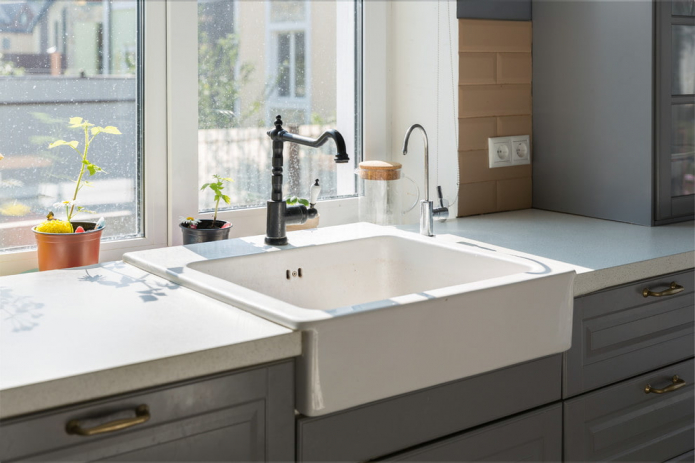


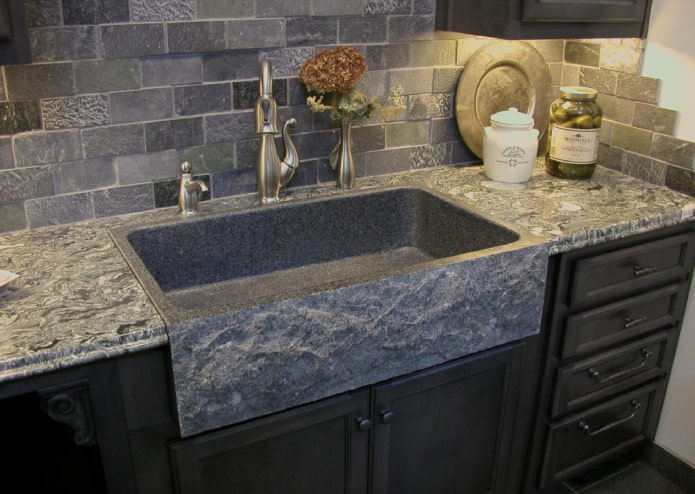
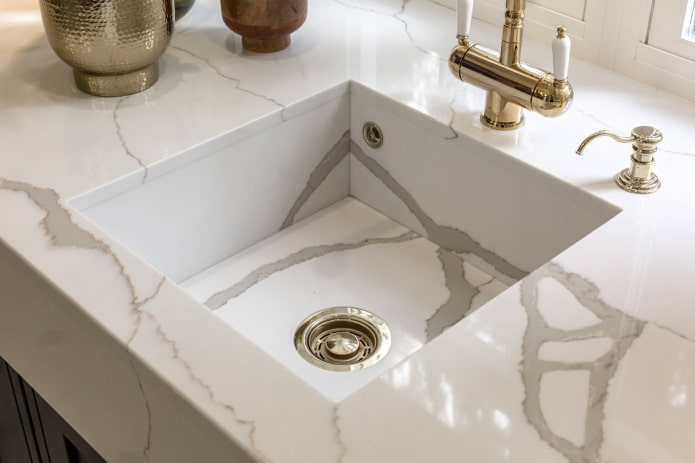
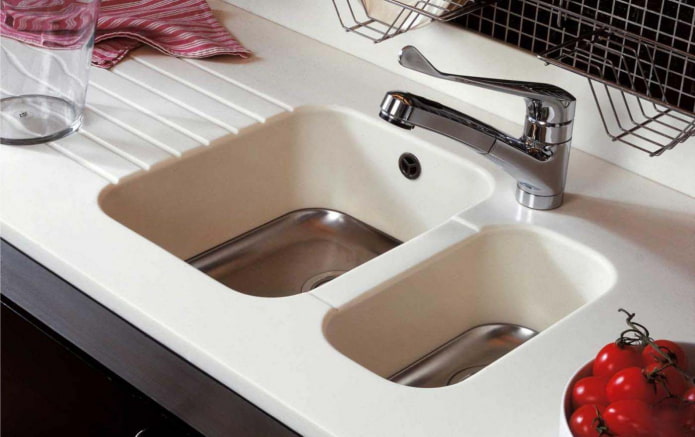
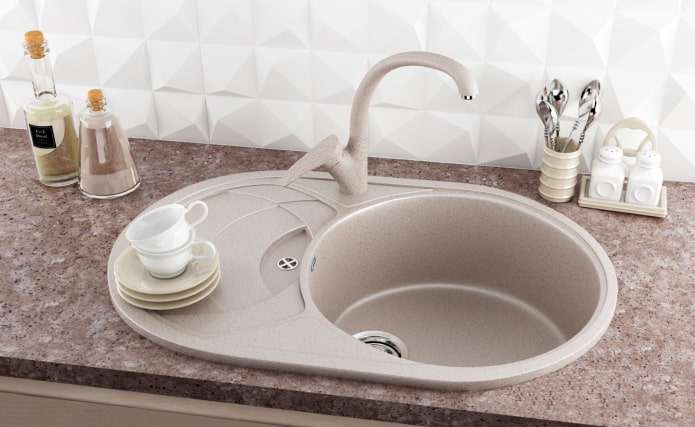


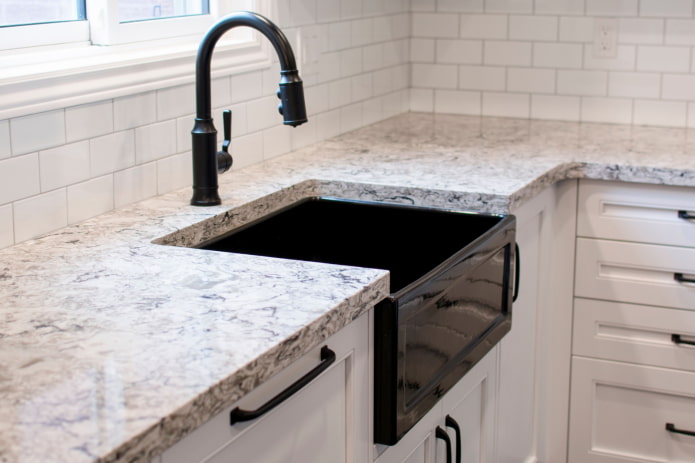
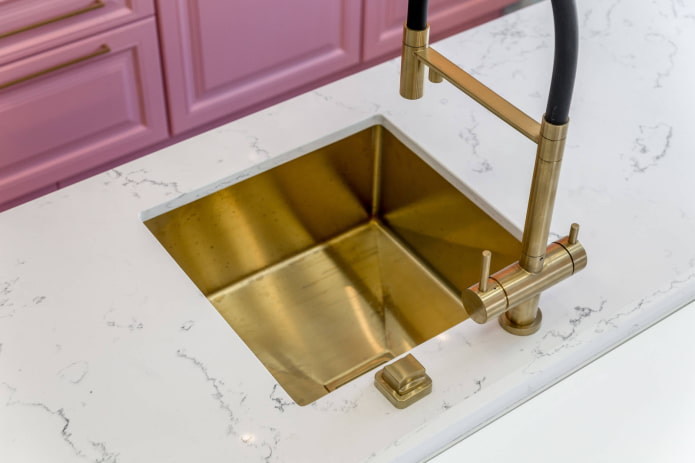
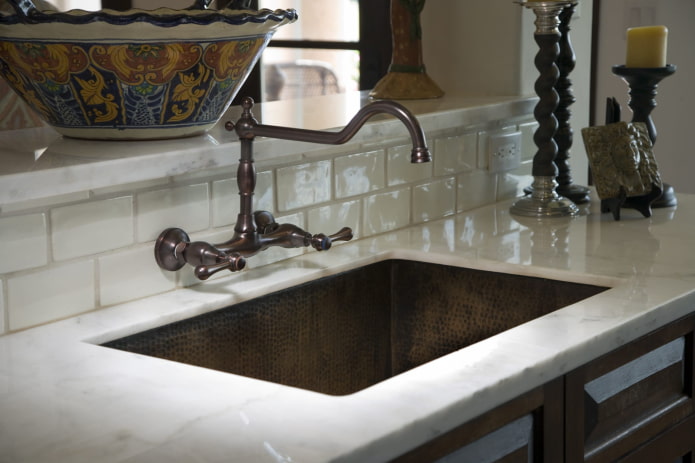
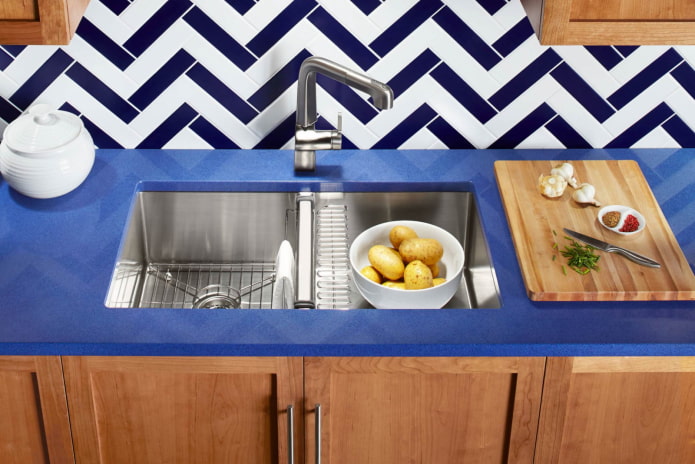
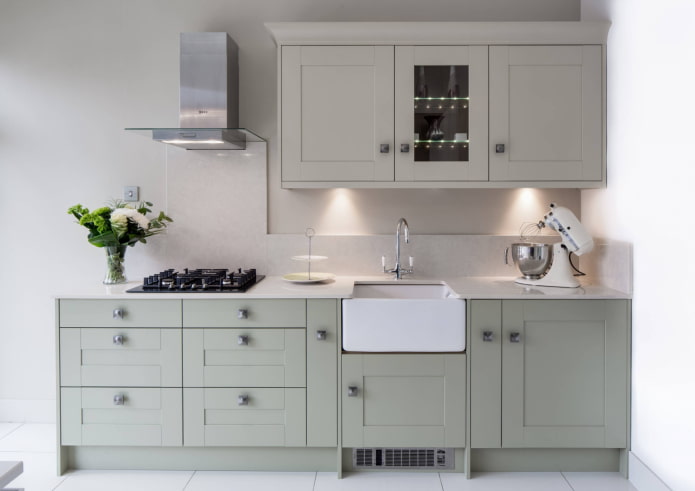
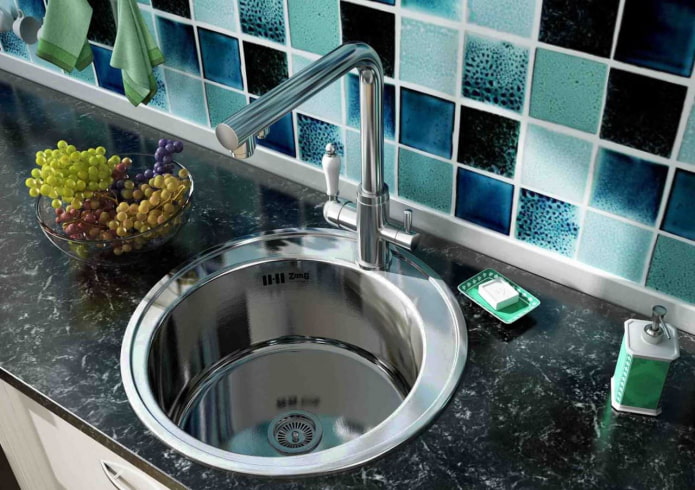
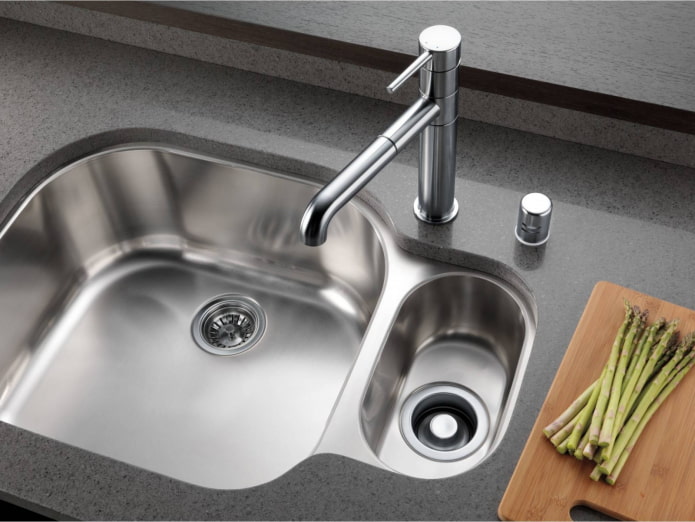
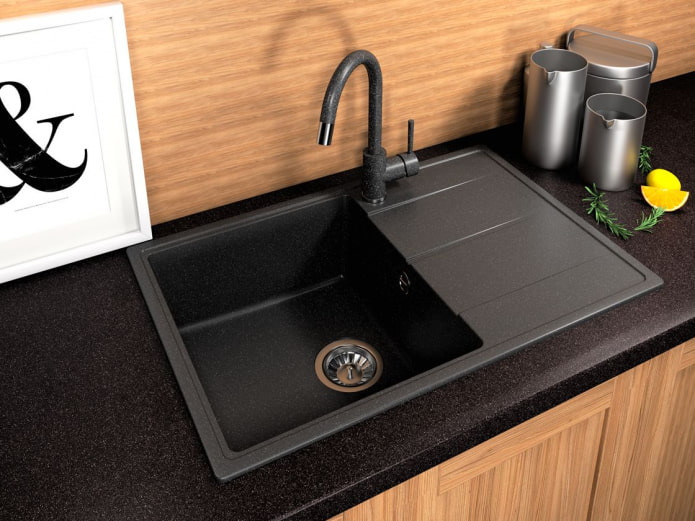
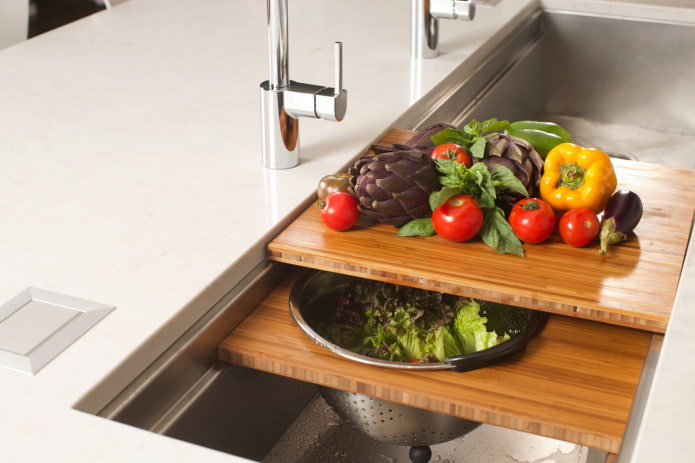
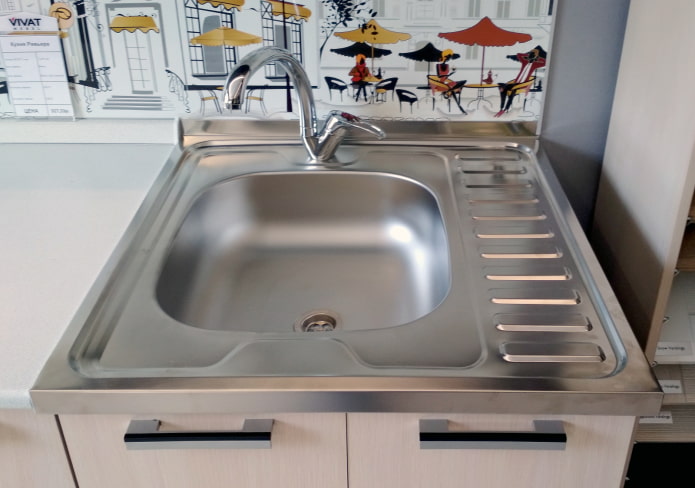
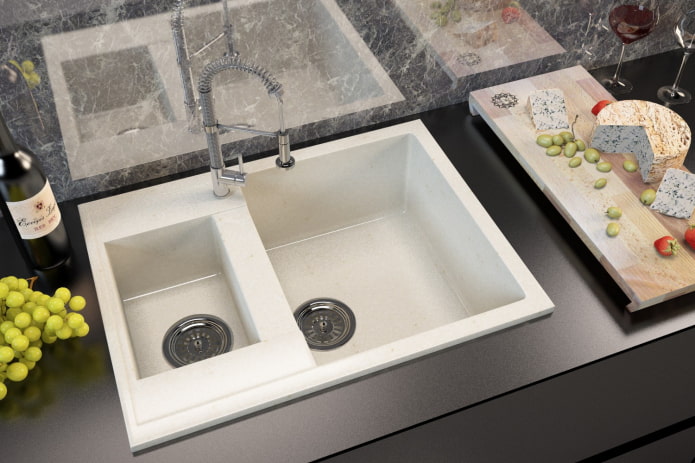
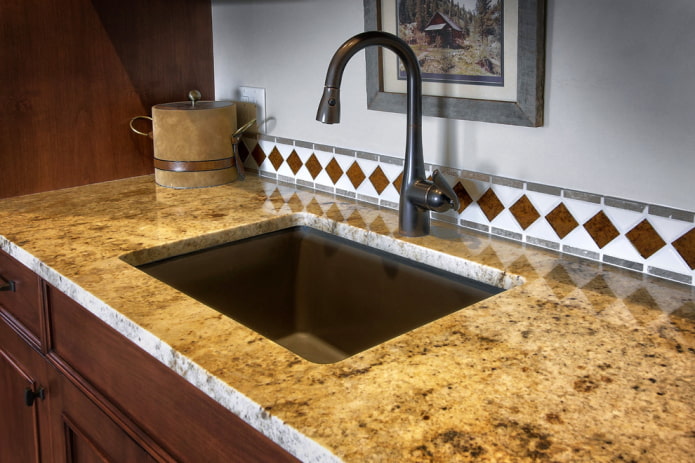

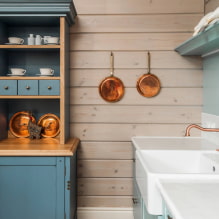
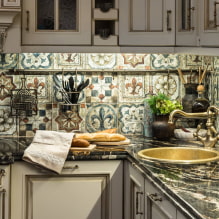
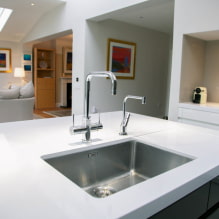
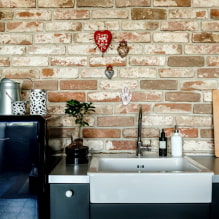

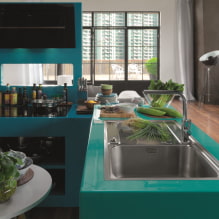

 How to choose the color of the sink for the kitchen?
How to choose the color of the sink for the kitchen? White kitchen: features of choice, combination, 70 photos in the interior
White kitchen: features of choice, combination, 70 photos in the interior Black suite in the interior of the kitchen: design, choice of wallpaper, 90 photos
Black suite in the interior of the kitchen: design, choice of wallpaper, 90 photos Modern design ideas for curtains for the kitchen - we make out the window stylish and practical
Modern design ideas for curtains for the kitchen - we make out the window stylish and practical Wallpaper design: 65 photos and ideas for a modern interior
Wallpaper design: 65 photos and ideas for a modern interior Design of a white kitchen with a black countertop: 80 best ideas, photos in the interior
Design of a white kitchen with a black countertop: 80 best ideas, photos in the interior